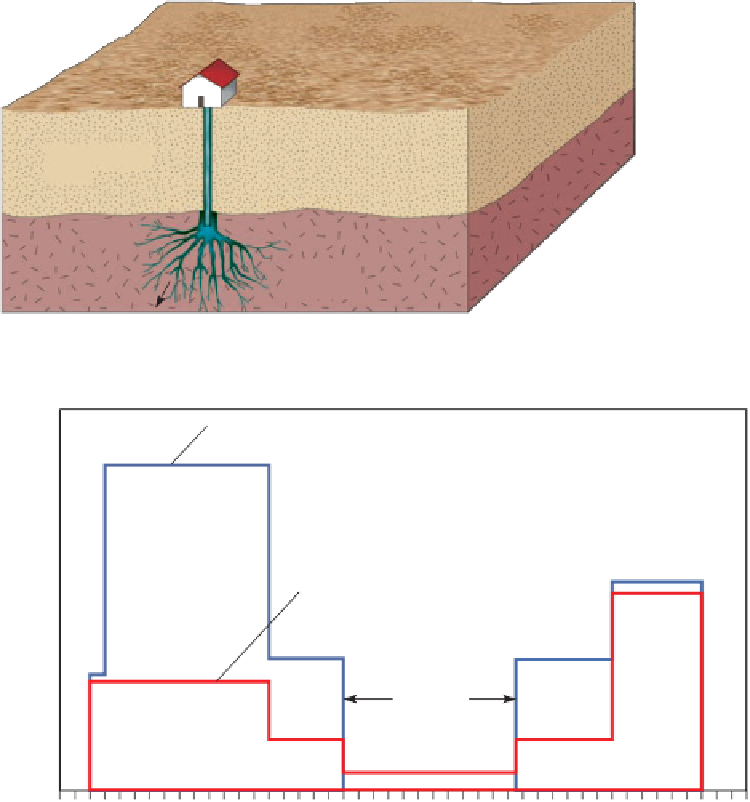Geology Reference
In-Depth Information
◗
Figure 8.20
Controlling Earthquakes
Rocky Mountain
Arsenal well
Sedimentary
rock
Metamorphic
bedrock
Fluid
Fracture
zone
Earthquake focus
A block diagram of the Rocky Mountain Arsenal well and the underlying geology.
a
70
8
Average gallons of waste injected per month in arsenal disposal well
7
60
6
50
5
40
Average number of Denver
earthquakes per month
4
30
3
20
No waste
injected
2
10
1
0
0
1962
1963
1964
1965
A graph showing the relationship between the amount of wastewater injected into the well per month
and the average number of Denver earthquakes per month. There have been no signifi cant earthquakes in
Denver since injection of wastewater into the disposal well ceased in 1965.
b
Any disturbance, such as a passing train or construc-
tion equipment, can cause seismic waves, but only those
generated by large earthquakes, explosive volcanism, aster-
oid impacts, and nuclear explosions can travel completely
through Earth.
As we noted earlier, P- and S-wave velocity is deter-
mined by the density and elasticity of the materials they
travel through, both of which increase with depth. Wave
velocity is slowed by increasing density, but increases in ma-
terials with greater elasticity. Because elasticity increases with
depth faster than density, a general increase in seismic wave
velocity takes place as the waves penetrate to greater depths.
P-waves travel faster than S-waves under all circumstances,
but unlike P-waves, S-waves are not transmitted through liq-
uids because liquids have no shear strength (rigidity); liquids
simply fl ow in response to shear stress.
If Earth were a homogeneous body, P- and S-waves
would travel in straight paths as shown in
Figure 8.22a.
However, as a seismic wave travels from one material into
another of different density and elasticity, its velocity and direc-
tion of travel change. That is, the wave is bent, a phenomenon
known as
refraction
, in much the same way as light waves
are refracted as they pass from air into more dense water.
Because seismic waves pass through materials of differing
density and elasticity, they are continually refracted so that
their paths are curved; wave rays travel in a straight line only
when their direction of travel is perpendicular to a boundary
(Figure 8.22b, c).
In addition to refraction, seismic rays are
reflected
,
much as light is reflected from a mirror. When seismic rays
encounter a boundary separating materials of different den-
sity or elasticity, some of a wave's energy is refl ected back to
◗









Search WWH ::

Custom Search